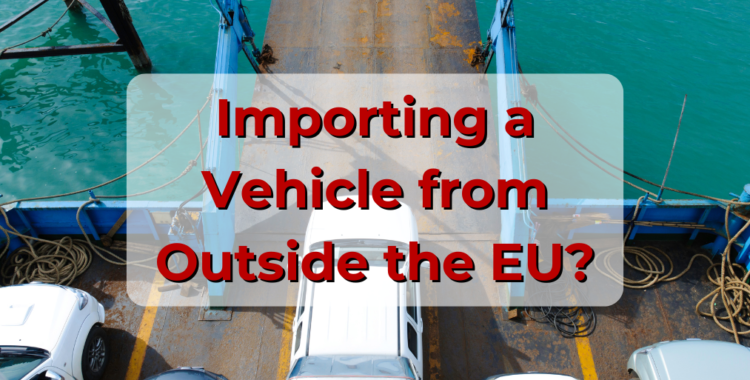Importing a Vehicle from Outside the EU
How to Bring a Vehicle into Spain from the UK or Another Non-EU Nation
Importing a vehicle into Spain from a non-EU country, like the UK, entails a more intricate process compared to importing from within the EU. Here’s what you need to know:
Importing from another European nation into Spain isn’t straightforward either. Typically, any procedure involving entities outside the EU in Spain requires additional paperwork, time, and financial resources.
This guide is particularly relevant to Britons relocating to Spain post-Brexit, aiming to bring their vehicles along, as well as to individuals from countries like the US and Canada who are eager to bear the transport costs of shipping their cherished vehicles to España.
The process involves various steps, including completing customs forms, paying fees, obtaining a Certificate of Conformity, and changing number plates, which can be overwhelming. Here’s a breakdown:

Customs Clearance:
- Prior to departure, undergo customs clearance by filling out forms related to your vehicle.
- Ensure you have documents such as sales contracts, receipts, and vehicle details.
- Repeat the customs process upon arrival in Spain.
Customs Duty and Taxes:
- Expect to pay taxes and fees, which may increase by approximately 10% for non-EU countries.
- Exceptions exist, such as exemptions from VAT for individuals moving from a non-EU to an EU country for personal use.
Bilateral Agreements:
- Certain agreements exempt vehicles from specific non-EU countries, like Mexico and Morocco, from tariffs.
- However, acquiring a EUR1 certificate may be necessary for exemption.
Recognition Certificate:
- Vehicles from non-EU countries, like the UK, must undergo a homologation process for EU registration.
- Each vehicle part must pass safety, emissions, and technical tests.
- Once homologated, the vehicle receives a Certificate of Conformity and undergoes an ITV test.
Passing the ITV Test:
- Provide documents like proof of ownership, fee payment, driver’s license, insurance, and vehicle data sheet for the ITV test.
Registering and Changing Number Plates:
- Schedule an appointment at the local DGT office.
- Complete necessary forms and pay registration taxes.
- Provide required documents including NIE number, proof of payment, invoice, and Certificate of Conformity.
After completing these steps and obtaining car insurance, your vehicle is legally imported, registered, and ready to drive in Spain.
More details can be found HERE at the Spanish Tax Agency Website.











